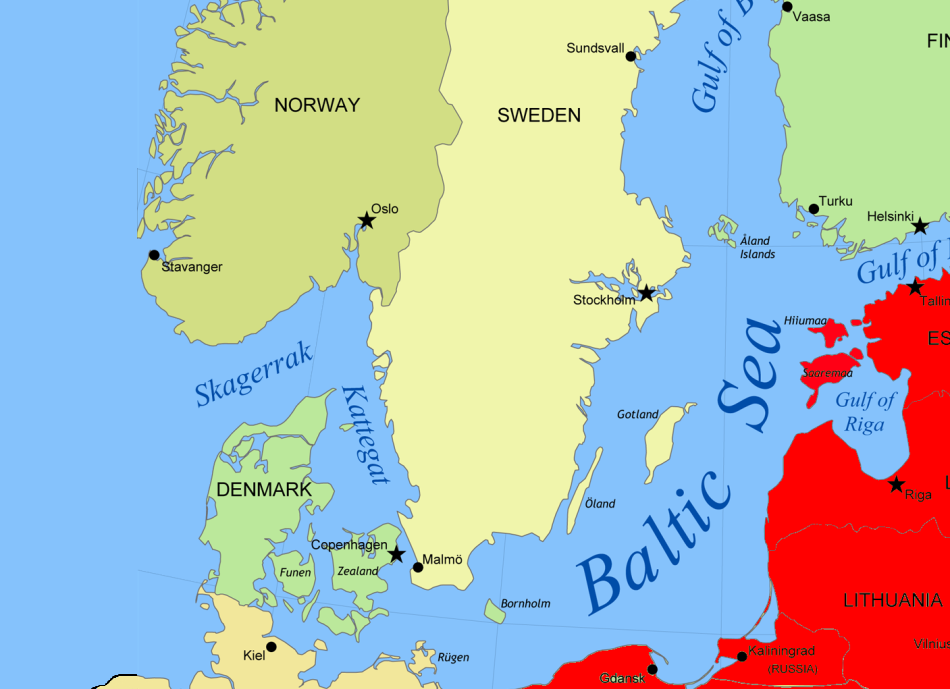Just came across an even more lozenge-shaped island called Bornholm between the Kattegat, to be navigated with circumspection, and the Baltic Sea

which according to legend is the birthplace of the Burgundians, though Born presumably refers to fresh-water springs which the island has in plenty, as well as Denmark's "only tarn" or mountain lake, the Hammersø.
Bornholm is of Special Megalithic Interest as the site of a Neolithic 'sun temple' ("Bornholm's Stonehenge"), 55° N, 15° E, though it sounds more like a beacon hill from the article in Wiki:
From the clay pieces, burnt flint and burnt bones found on the site, it has been suggested that the circles may have served as a sun temple. They apparently supported a clay-covered platform, accessed by a flight of steps, on which experts believe fires could have been lit, possibly for sacrifices. Clay disks with ancient sun symbols have also been found, ritually buried under the poles. It appears as if the wooden circles were constructed over three separate periods
This island must have been of strategic importance as northern Europe's largest medieval fortress, the Hammerhus, is on the Hammeren, a granite promontory that marks Bornholm's northernmost point.
The easternmost point is Svaneke ('Swan-wick') which has a distinctly sinister-looking swan or goose holding (swallowing?) what seems to be a ring as its guardian angel




